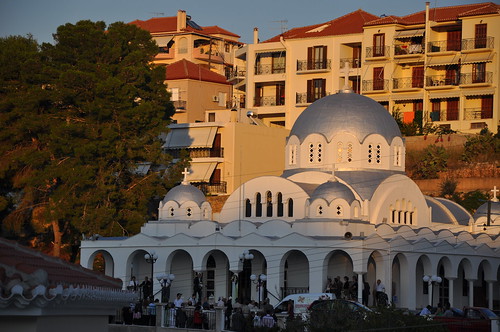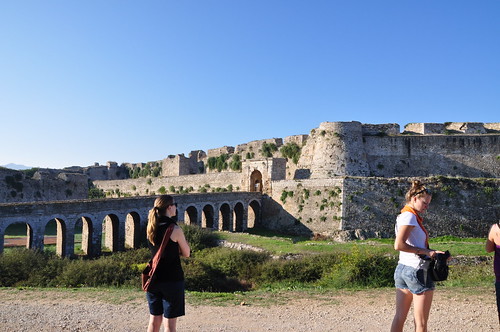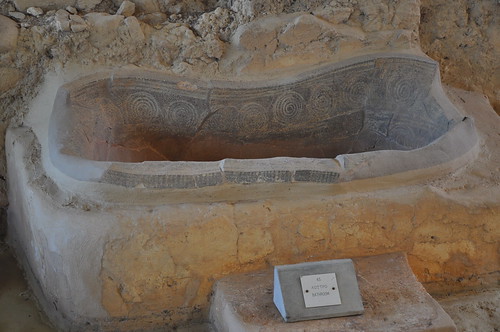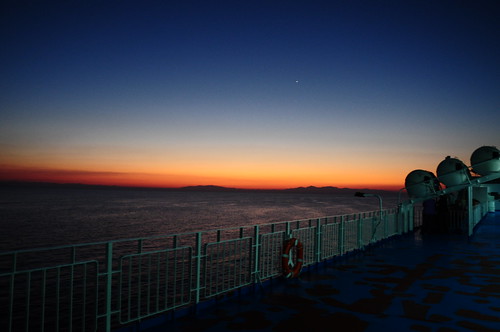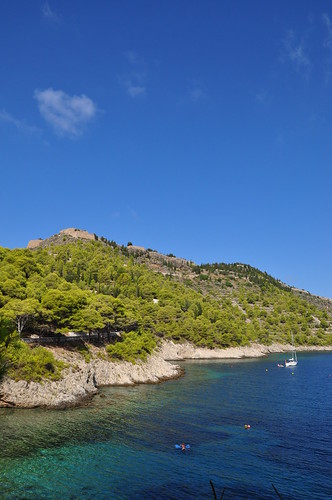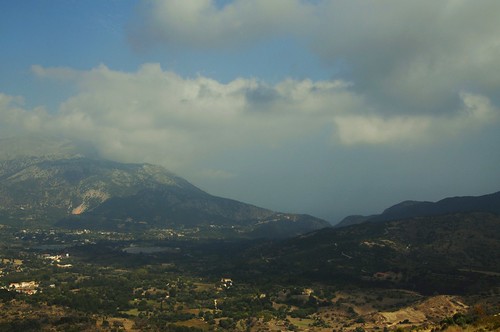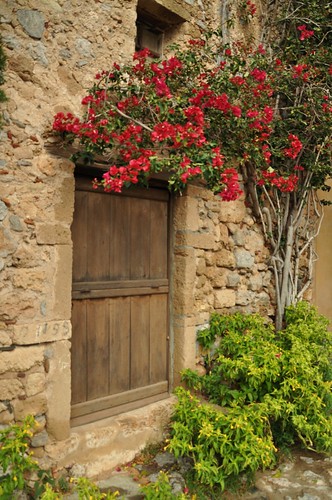
But then we went to Monemvasia. Oh, Monemvasia. It’s in the Laconia region of the Peloponnese (the eastern side of Sparta) and it’s amazing. Apparently the road to the town was only finished two or three years ago, and it’s touted as the gem of Greece that not even the Greeks know about. For a town that for most of the 20th century was described as forgotten, abandoned, and lonely, it is certainly a busy place now, but it seems like it’s still unknown to a lot of tourists. Lots of pictures of it here!
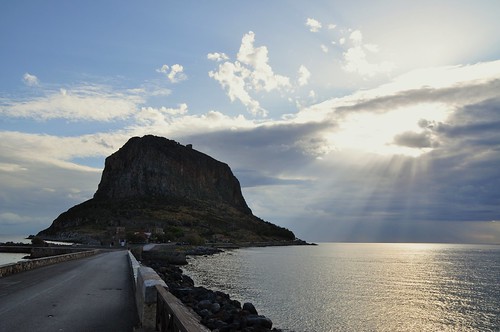
The new town is on the mainland and the upper and lower sections of the old town are on a massive rock that sits a good half kilometre offshore. From what I’ve read, the 300 metre tall rock didn’t appear in the area until the 5th or 6th century AD, after a massive earthquake in the area, and began to be inhabited shortly thereafter. And stayed inhabited right up until the modern age, which is why it’s in such good shape right now. The Romans, the Venetians, and two cycles each of the Byzantines and Turks occupying it meant the town and citadel were constantly revamped.
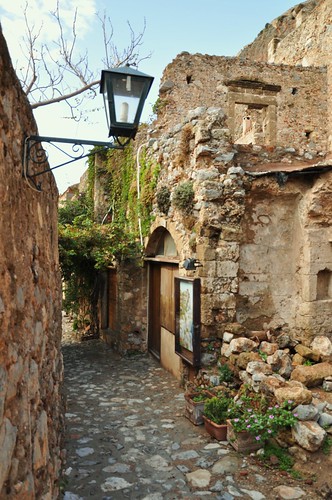
How to describe it, though? Imagine every stereotypical medieval town in Italy or Greece that you’ve seen in cheesy movies. It’s like that. All stone, all winding cobblestone streets and Escheresque staircases that variously lead to private dwellings, stone arches, abandoned churches, portellos through the castle wall, hidden beaches – or they could lead nowhere at all. Then the zig-zag pathway that leads up to the upper town, and the heat and dryness and the cats sitting on the sills of hobbit-sized windows and doorways and the overwhelming smell of flowers. It would be a fabulous setting for an M.R. James style ghost story, which I may just have to write myself and give a ridiculously romantic title like “The Flowers of Monemvasia”.

There are purportedly 26 extant churches in the town, including the main one of Agia Sophia on the very top of the rock. The church of Christos Elkmenos is on the right and the archaeological museum is on the left. Agia Sophia is the best preserved and has frescos and paintings still on its walls and ceilings, and was once the centre of the upper class dwellings on the top of the rock, ie) the best place to be when pirates attacked.
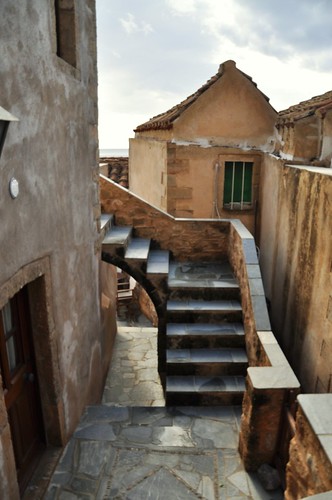
But today it’s the lower town that’s inhabited, with the upper town in complete ruins besides Agia Sophia. I was happy to hear that there are strict regulations for private dwellings in oldschool Monemvasia in order to keep the medieval air about the place. I imagine the people who live in the houses are the types of people who get featured in architectural magazines in articles about how to best preserve your pre-17th century cottage’s plaster walls and hand-tatted lace curtains. Madness. I can’t imagine how much the real estate here is going for, but there are certainly renovations going on, with materials brought in on pack horses because of the narrowness of the cobblestone streets.
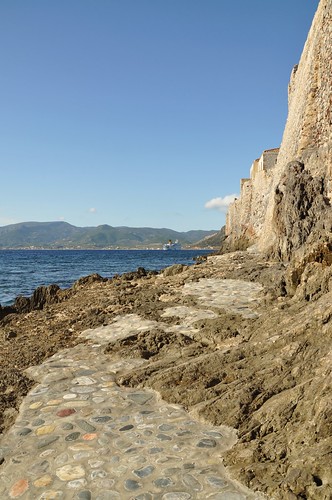
”Vertical rock – all day drinking the boiling sun, holding it in its guts opposite the open sea, and you with your back against the rock, chest open to the sea – half fire, half dew...” - Ioannis Ritsos, a renowned Greek poet born in Monemvasia.
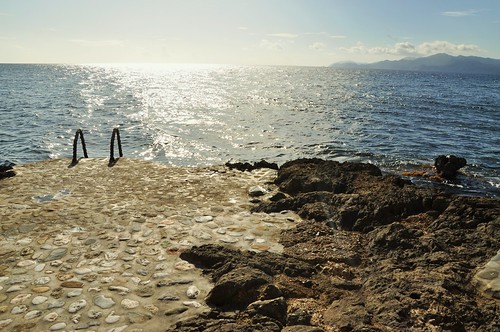
For, you see, any good castle fortification has its value defined by ease of access to water and food once you’ve barricaded yourself inside the walls. And it’s here that Monemvasia is not substantially better off than many of the castles scattered around Greece, because the rock lacks a natural water source – which backs up the theory that the rock is actually a huge chunk of the mainland that fell into the ocean during an ancient earthquake. The archaeological museum offers up the quote “You can find whatever you want in this city, except for water...One neighbour does not even give a drop of water to the other to drink” from a 17th century traveller. Barring travel to the mainland, it was rainwater or nothing. There are still cisterns in both the upper and lower towns that took advantage of just that.

So, yeah. When I retire a billionaire I am going to have a house in Monemvasia for the winters and I’m going to dress up in medieval clothing and faff about all day on sunny terraces playing a lyre or something. It was so ridiculously idyllic. There was a moment on the last morning where Cat and I were sitting on the terrace of a cafe, drinking very fresh orange juice with very warm, very buttery chocolate filled croissants, looking over the terracotta rooftiles to the ocean and listening to the birds singing in the lemon trees beside us...it was surreal. If ever you get to go to Greece, go to Monemvasia, my dears. It’s worth the bus ride from Athens.



